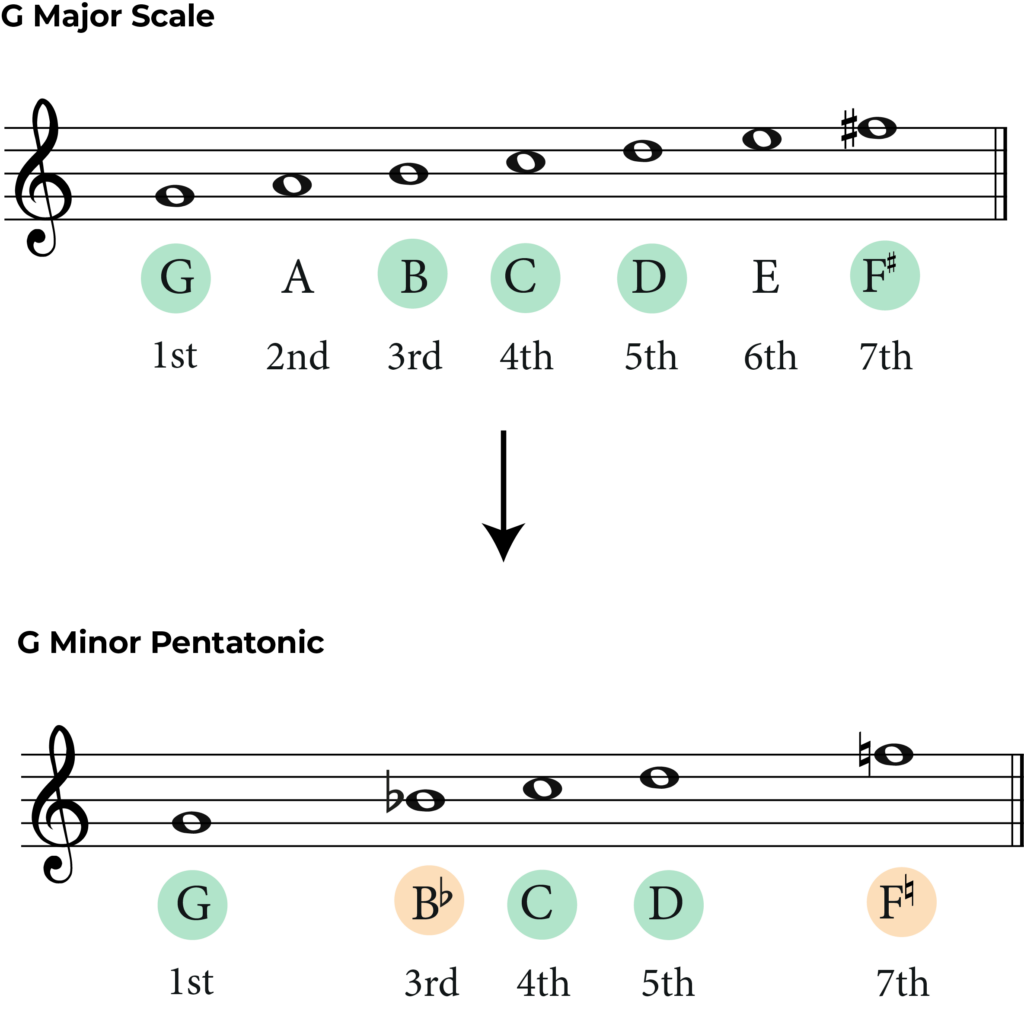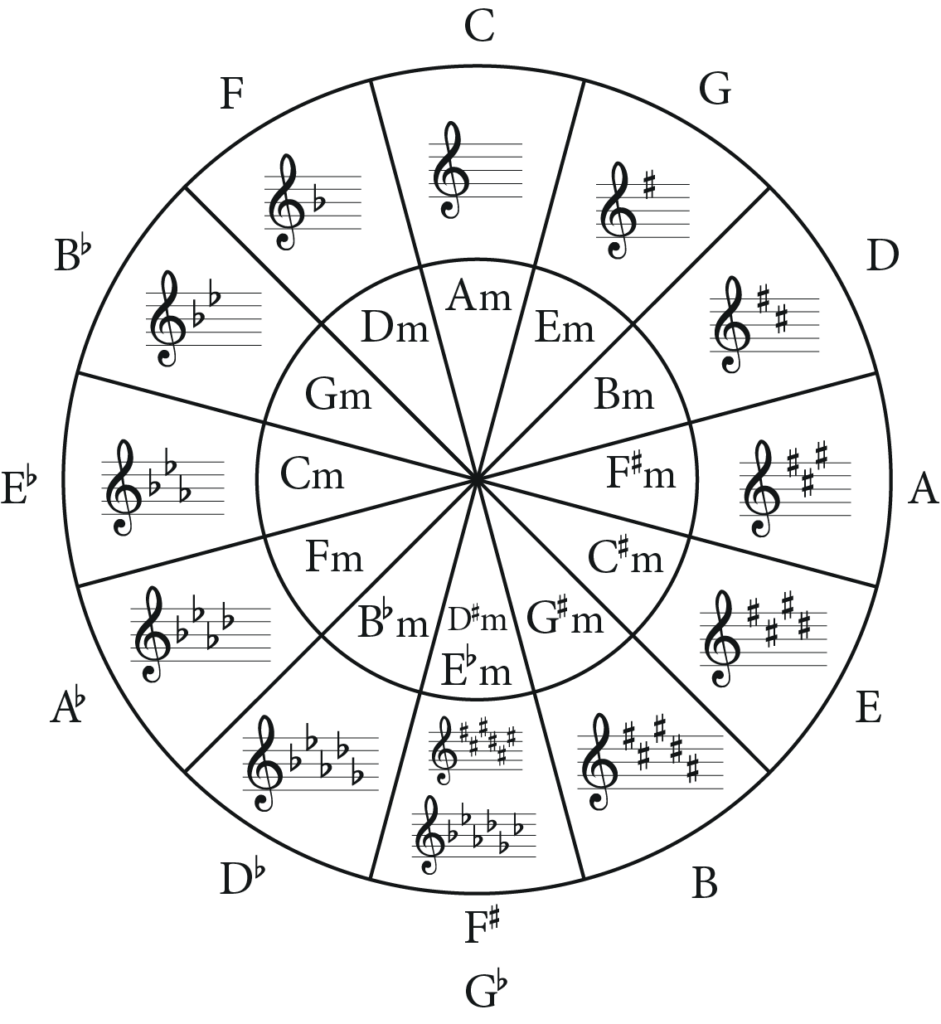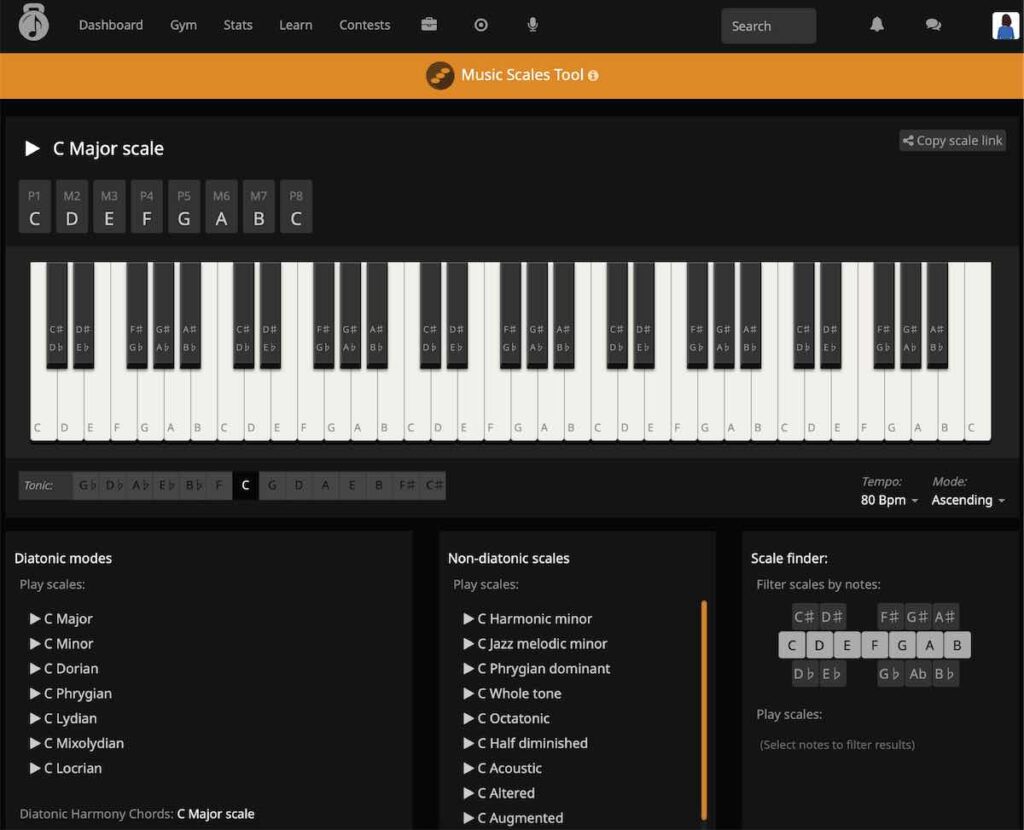The G minor pentatonic is one of the most popular scales in Western music and particularly for guitarists. It’s used in a huge variety of genres including rock, pop, blues, jazz and country. The popularity of this scale centres around versatile it is and how easy it is to play and improvise with.
The G Minor Pentatonic scale consists of 5 notes: G, Bb, C , D, F
The scale is constructed by using the 1st (root), 3rd (b3), 4th (p4), 5th (p5) and 7th (b7) degrees of the natural minor scale. You can think about it as a gaped or incomplete version of the major scale. ‘Penta’ means five, hence the 5 notes in the G Minor pentatonic scale.
5 Shapes of the G Minor Pentatonic Scale
Position 1

Position 2

Position 3

Position 4

Position 5

It’s important to learn these shapes well as they are exactly the same for the major pentatonic scale. The only difference is where the root notes are! Also by memorising the positions you will be able to improvise in a more intuitive way.
Creating the G Minor Pentatonic Scale
One of the simplest ways to create the G minor pentatonic scale is to use the major scale. Below is the G Major scale with the 1st, 3rd, 4th, 5th and 7th highlighted.
If we flatten the 3rd and 7th by a half-step (semitone) we will end up with the G Minor pentatonic.

Another way to creating a minor pentatonic scale is to start with the natural minor scale and remove the 2nd and 6th degrees. For this one you need to make sure you know you key signatures and relative minors (more on this below).
Here is G natural minor, which is a Bb and Eb in it.

As you can see, we get the G Minor pentatonic scale if we remove the 2nd and 6th degrees.

Relative Minor and Relative Major
It is the minor pentatonic that many guitarists learn first, however we do also have the major pentatonic. This is made from the 1st, 2nd, 3rd, 5th and 6th notes of the major scale. It is related to the minor pentatonic because all major and minor scales share key signatures.
To understand this we need to know what relative major and minor keys are. If we look at the circle of fifth below you can see that for each major key we have a minor key with the same key signatures (the same number of sharps or flats).

For example C major and A Minor both have no sharps or flats. The only difference is that A minor starts on an A natural and C major starts on a C natural.
This means that our minor pentatonic scale will also have relative major pentatonic scales.
G Minor is the relative minor of Bb flat major. Both share the same key signature.
It can be confusing for beginner guitarists to realise that the major pentatonic shapes are the same as the minor pentatonic shapes. The key thing to remember it that the root note of the scale is different and therefore in a different place on each shape.
Backing Tracks for G Minor Pentatonic Scale
Practising scales can be tricky. You can run up and down them, play them in thirds, of use arpeggios to help you. Improvising over backing tracks are another great way to improve your playing and knowledge of scales.
Here are a few tracks you can use but remember that you could use any song in the key of G Minor.
Ear Training and Scales
To develop as a musician you’ll want to be able to recognise scales by ear. This is where ear training comes in. My recommendation for this is Tonegym as they have a comprehensive and fun program for training your ears! It’s what has gotten the best results with for my own students.
In the ‘tools’ section of their site, Tonegym even have a scale tool that allows you to listen virtually any scale.
For an in-depth look at ear training, here’s my full review of Tonegym.

Songs that use The Minor Pentatonic Scale
‘Paranoid’ – Black Sabbath (E minor Pentatonic)
“Paranoid” by Black Sabbath is a classic heavy metal track known for its raw energy and iconic riff. The opening riff of the song a great example of the E minor pentatonic scale.
‘Purple Haze’ – Jimi Hendrix (E minor Pentatonic)
“Purple Haze” by Jimi Hendrix opens with a captivating riff, demonstrating a prime instance of the E minor pentatonic scale in action. This riff sets the tone for the song’s signature psychedelic sound and Hendrix’s virtuosic guitar style.
‘Born Under a Bad Sign’ – Albert King (C# Minor pentatonic)
“Born Under a Bad Sign” by Albert King is a timeless blues classic, notable for its soulful groove and powerful vocals. The opening riff of the song prominently highlights the use of the C sharp minor pentatonic scale, contributing to its distinct bluesy essence and King’s soul-stirring guitar work.
What’s next….?
- Learn the G Major Pentatonic Scale
- Pick other scale to master with our range of scales blogs.
